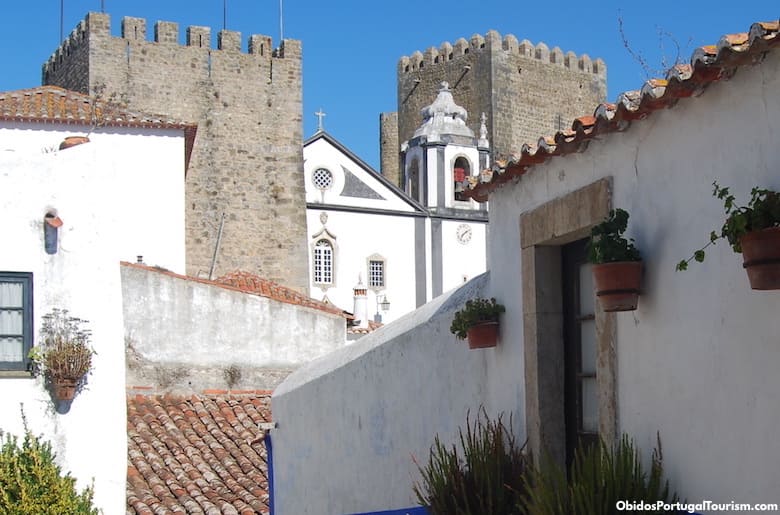
Óbidos is one of Europe's best-preserved medieval towns
Obidos is a gorgeous maze of narrow cobbled streets, and going through it is the town’s real main attraction. At each step on your stroll, you come across charming details, such as gothic, renaissance and baroque details, hidden corners, and perfectly-framed views. It can be said that the town as a whole is a work of art, destroyed and restored throughout time.
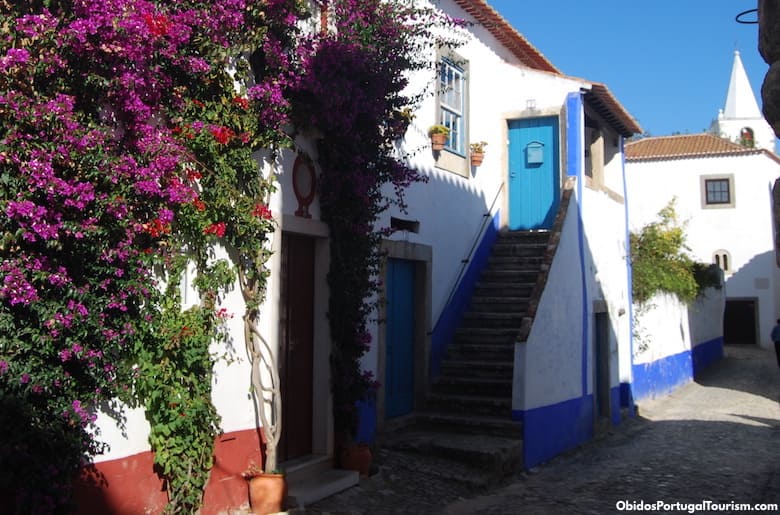
Óbidos is a maze of narrow, colorful streets
A visit starts by going through Porta da Vila (the town gate), and many visitors usually walk straight down the main street (Rua Direita) from there, while others turn immediately to the left, climbing up the steps of the ramparts. We recommend the latter, as you’re introduced to the town by a beautiful panoramic view over it. Continue to the left at the top of the stairs, and walk over the walls until you reach the castle. In between you’ll have the best views over the colorful houses and church towers.
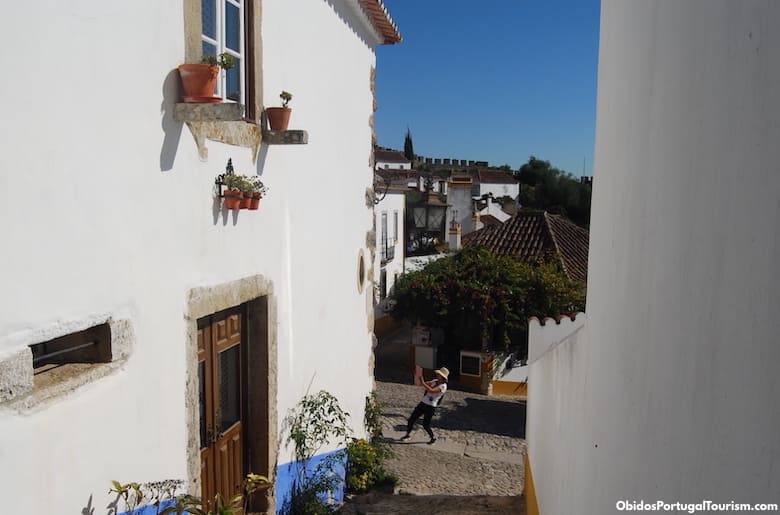
Walking around and photographic is Óbidos' top activity
Walking back down to the street at the castle, you may visit the Church of St. James (Igreja de Santiago), which has been turned into an interesting bookstore. Behind it is a big terrace faced by the castle, where most of the town’s festivals take place. After taking a photo of the castle’s façade, head back towards the Bookstore-Church of St. James, and you can take a look at the colorful streets to the left and right, and then continue walking straight down Rua Direita for a few feet, until you reach the town’s main square, Praça de Santa Maria, the former marketplace. It’s home to the town’s main church (Igreja de Santa Maria), which faces an old pillory. Next to the church is the Abílio de Mattos e Silva Museum and a view of Casa do Arco da Cadeia, the town’s former prison. Next to the museum stands Igreja da Misericórdia (“Almshouse Church”), and you also see a charming medieval building with a gothic door and windows, which housed the town’s synagogue.
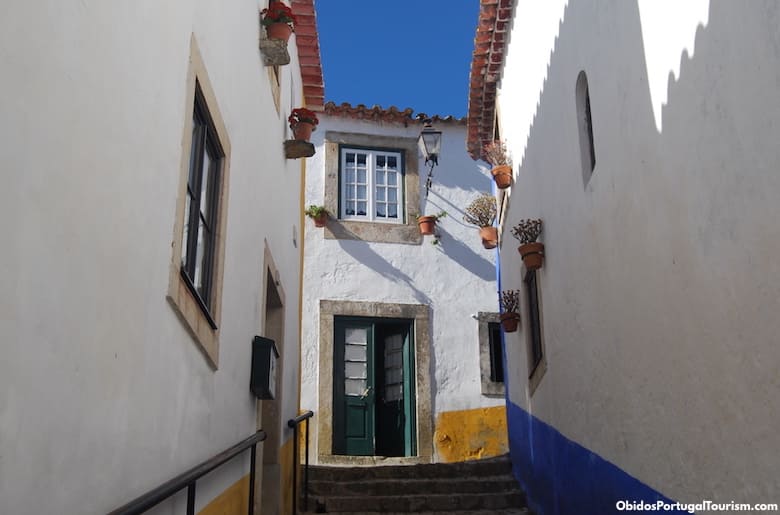
Typical narrow street and house in Óbidos
Back on Rua Direita you then find the Municipal Museum, and a few feet from there, the Nova Ogiva Gallery, whose contemporary art exhibitions brings you back to modern times.
Further down Rua Direita you see St. Peter’s Church hidden on a small square to the right, that’s also home to the Town Hall in the former vicars' palace. Across from the church is the gothic Chapel of St. Martin.
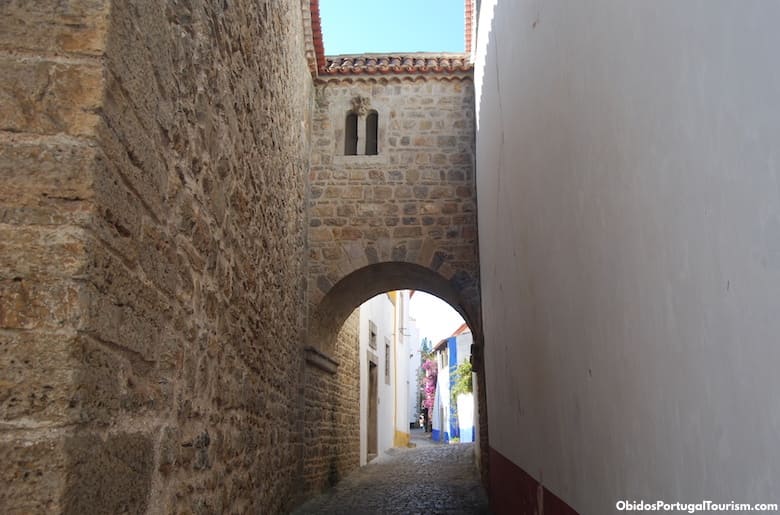
Medieval arch in Óbidos
Return to Rua Direita, and be sure to stop for a shot of ginja and at one of the several souvenir shops.
You then see a monument to the poet Camões erected in 1932 and the Town Gate. Don’t exit just yet, instead turn the corner for a meal at one of the restaurants down the picturesque Rua Josefa de Óbidos.
Back outside the walls, past the Town Gate, walk a few feet to the small Church of St. John the Baptist, now home to the Parish Museum.
On your way back to your car or bus stop, notice the 16th-century aqueduct.